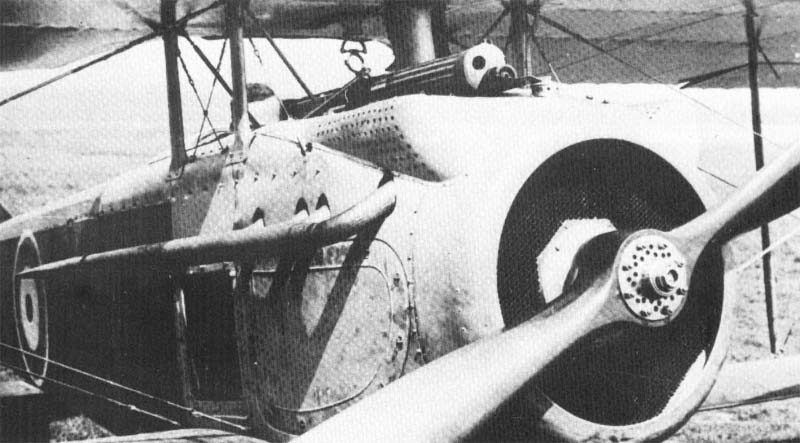Thanks to his machine gun system, by Apr. 18, 1915, Garros had three kills under his belt. At this time, the entire French Air Force had managed to down five German planes. Roland Garros accounted for three of these. Never before had a lone pilot hunted other men in the air.
The life of Roland Garros was thrilling. He was an early aviation pioneer who, despite wrecking his bamboo aircraft at Versailles, learned himself to fly it. He was a world-class athlete, an airshow pilot, a lawyer who refused to learn Latin, a sports car dealer on the Champs-Elysées, and a racer. He performed flight demonstrations for large crowds across the Americas.
In the end, Roland Garros became the first fighter pilot in history. He left his comfortable life in Paris and took to the skies during the First World War to fight and fly.

In fact, throughout the fighting, Roland Garros, Jules Hue, and Raymond Saulnier thought the use of a single-seat fighter plane outfitted with a machine gun ring would transform the war, as described by Ed Cobleigh in his book The First Fighter Pilot-Roland Garros. They were unable to present a functional synchro device, though. Plan B, which involved firing through the propeller, was the team’s backup strategy. While it wasn’t an elegant engineering solution, it did function in part. Garros hoped to prove the combat utility of a fixed gun with the jury-rigged mechanism.
Success would encourage greater investment and development. Garros reported to MS 26 squadron with his dependable mechanic and was the sole pilot given clearance to test his theory in battle.
When not in flight, Garros and Jules Hue worked in a hangar used to store spare components to find a solution to the propeller/gun issue. Two triangular steel plates were created and attached to a propeller’s back surface. Each plate would deflect bullet impact away from the thin wood beneath. Metal grooves were carved into the surfaces of the plates so that a bullet would be caught and thrown forth as opposed to ricocheting back at the pilot.
Steel straps held the miniature shields to the hub of the propeller. To avoid strong rotating forces, the entire assembly is required to be delicately balanced. Only 5-10% of the hot lead output from the gun, according to Raymond Saulnier’s calculations, would hit the propeller. The plates did not need to deflect constant impacts. Deflector plates were a brute-force way to fire through a prop arc by diverting a few bullets, but would they be effective in combat? Surprisingly, Garros and Hue’s original invention made it through the war intact and is now on exhibit in Germany.

The first gun-equipped aircraft of Garros and Hue was parked outdoors when a storm folded it up into a crumpled ball. They saved the modified propeller and put it on the first real fighter aircraft’s other airframe. The first of April 1915 dawned clear and cool. It was time to try the deflector plates, which had only been around-tested. Garros and Hue were aware that their piece of ironwork was not the final answer. Its objective was to show generals and businessmen the tactical use of the real fighter plane.
Though not for the side they fought for, they would be enormously successful.
Garros had three kills under his belt by April 18, 1915, all thanks to his machine gun system. Five German aircraft had been shot down by the French Air Force as a whole at this point. Three of these were at Roland Garros. Never before had a lone pilot hunted other men in the air.
On April 18, 1915, Garros’ engine failed while he was flying a second sortie behind enemy lines at low altitude in search of his fourth victory. According to some stories, the cause of this was a plugged fuel line, but other reports—mostly those from Germany—claim that ground soldiers shot him down and that a bullet severed a delicate copper tube. In either scenario, he was compelled to glide to a landing in occupied Belgium behind the lines. In order to prepare for this scenario, Great War aviators carried matches. To prevent the bird from coming into enemy hands, they were instructed to set their aircraft on fire.
Dry timber buildings coated with extremely flammable doped cloth were purportedly simple to destroy. Garros set his Type L alight, but it did not spread quickly enough. German foot soldiers quickly arrived, held Garros at gunpoint, and put out the fires. The fabric of the craft was presumably soaked by the cold, wet spring weather, preventing a quick bonfire. Importantly, the gun and armored propeller survived. Both were passed up the chain of command; the ground troops had no idea what these odd devices meant for the war effort, but they recognized the value of the ironmongery. They were true.

The downing of three observation planes at Roland Garros in less than three weeks caught the attention of French command authorities. General Foch, the Deputy Commander of the French army, commanded him. However, for some reason, his exploits were treated as an outlier, the actions of a random hero, not the start of a new phase in warfare.
On the other hand, the Germans carefully considered the tactical implications of Garros’ victories. Their men and planes were the ones that were shot down. An intense young man with a reputation as a smart engineer, a skilled pilot, and a slick socializer, but a man with questionable business ethics, meticulously studied Garros’ propeller with its deflector plates following removal from his aircraft. His name is Anthony Fokker. Tony Fokker acted immediately after being aware of Garros’ skein of killings and seeing the armored propeller. His accomplishments brought to a catastrophe for the Allies and a victory for the Central Powers. A renegade Dutchman named Fokker soon unleashed the dreaded Fokker Scourge.
The First Fighter Pilot-Roland Garros is available to order here.

